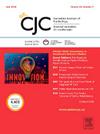Age-Dependent Relationship of Physical Inactivity With Incident Cardiovascular Disease: Analysis of a Large Japanese Cohort
IF 5.8
2区 医学
Q1 CARDIAC & CARDIOVASCULAR SYSTEMS
引用次数: 0
Abstract
Background
There have been limited studies examining age-dependent associations between physical inactivity and cardiovascular disease (CVD). We aimed to clarify the age-dependent relationship of physical inactivity with incident CVD.
Methods
We analyzed 1,097,424 participants, aged 18 to 105 years, without histories of CVD, enrolled in the DeSC database (median age, 63 years; 46.4% men). We categorized participants into the following 4 groups based on age: ≤ 44 years (n = 203,835); 45 to 64 years (n = 403,619); 65 to 79 years (n = 437,236); and ≥ 80 years (n = 52,734). We used 3 physical inactivity components gained from the self-reported questionnaire during a health checkup. The outcomes were composite CVD events including myocardial infarction, stroke, heart failure, and each CVD event.
Results
During a mean follow-up of 3.2 ± 1.9 years, 81,649 CVD events were observed. The hazard ratios of 3 physical inactivity components for CVD events increased with age category (P for interaction < 0.001). For example, the hazard ratio (95% confidence interval) of physical inactivity defined as not doing light sweaty exercise for 30 minutes at least twice a week for incident CVD in the groups aged ≤ 44 years, 45 to 64 years, 65 to 79 years, and ≥ 80 years were 0.97 (0.88-1.05), 1.08 (1.05-1.12), 1.12 (1.10-1.15), and 1.17 (1.12-1.21), respectively (P for interaction < 0.001). This association was consistent across subtypes of CVD including heart failure, myocardial infarction, and stroke.
Conclusions
The association of physical inactivity with a higher risk of developing CVD increased with age. Preventive efforts for physical activity optimization may be more valuable in older people.
体力活动不足与心血管疾病发病率的年龄关系:日本大型队列分析
背景:有关不运动与心血管疾病(CVD)之间年龄相关性的研究十分有限。我们的目的是阐明不运动与心血管疾病发病之间的年龄依赖关系:我们分析了 DeSC 数据库中 1,097,424 名年龄在 18-105 岁之间、无心血管疾病史的参与者(中位年龄为 63 岁;46.4% 为男性)。我们根据年龄将参与者分为以下 4 组:≤44 岁(203835 人)、45-64 岁(403619 人)、65-79 岁(437236 人)、≥80 岁(52734 人)。我们使用了在健康体检期间从自我报告问卷中获得的三项身体不活动成分。结果是包括心肌梗死、中风和心力衰竭在内的心血管疾病综合事件,以及每次心血管疾病事件:结果:在平均 3.2±1.9 年的随访期间,共观察到 81649 起心血管疾病事件。运动不足与心血管疾病事件的三个危险比随着年龄的增加而增加(P为交互作用结论):体力活动不足与心血管疾病发病风险增加的关系随着年龄的增长而增加。优化体力活动的预防措施对老年人可能更有价值。
本文章由计算机程序翻译,如有差异,请以英文原文为准。
求助全文
约1分钟内获得全文
求助全文
来源期刊

Canadian Journal of Cardiology
医学-心血管系统
CiteScore
9.20
自引率
8.10%
发文量
546
审稿时长
32 days
期刊介绍:
The Canadian Journal of Cardiology (CJC) is the official journal of the Canadian Cardiovascular Society (CCS). The CJC is a vehicle for the international dissemination of new knowledge in cardiology and cardiovascular science, particularly serving as the major venue for Canadian cardiovascular medicine.
 求助内容:
求助内容: 应助结果提醒方式:
应助结果提醒方式:


